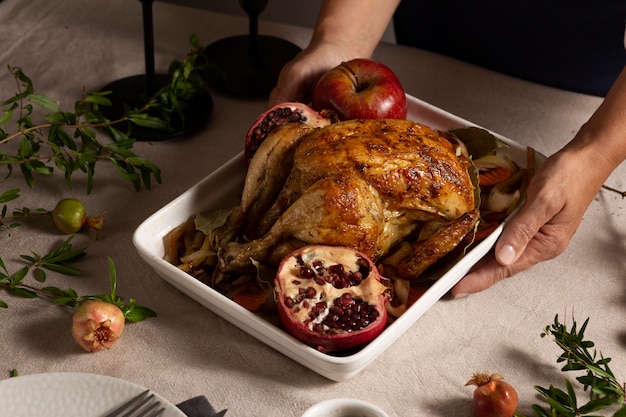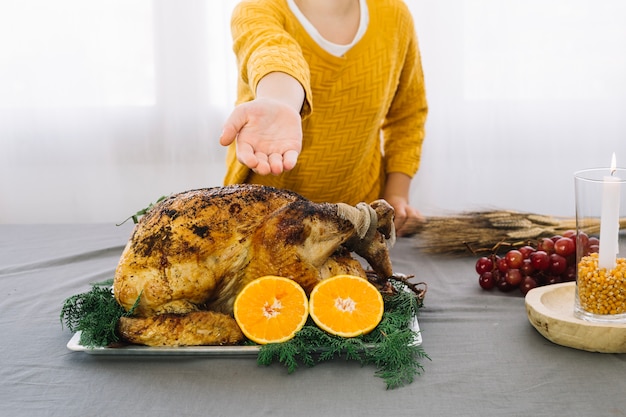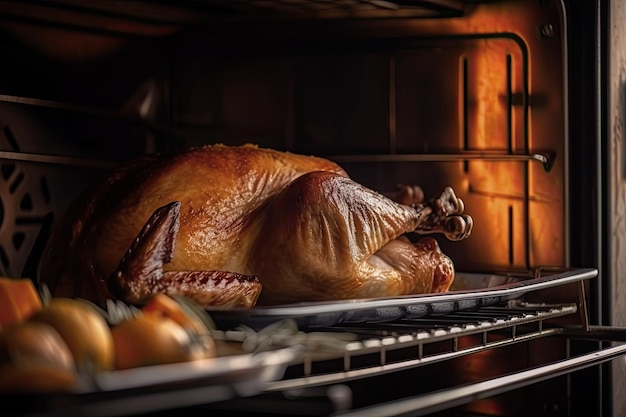Ah, chicken. It's a culinary chameleon, adaptable to countless dishes and cooking methods. But sometimes, even seasoned cooks find themselves staring at a raw bird, wondering, "How long do I cook this thing?" Don't fret, my friends! As a kitchen veteran who's spent countless hours perfecting the art of stovetop chicken, I'm here to guide you through the process, ensuring juicy, flavorful, and perfectly cooked chicken every time.
We'll be covering all the essential details, from selecting the right chicken to mastering different cooking techniques, all with a dash of my personal experiences and insights. So grab your apron, sharpen your knives, and let's get cooking!
Part 1: Choosing the Right Chicken: The Foundation of Flavor

The Importance of Quality: A Culinary Truth
Just like a good foundation is crucial for a sturdy house, choosing the right chicken is essential for a delicious dish. You wouldn't build a home with substandard materials, would you? The same principle applies to cooking. Opting for quality chicken is a culinary investment that will pay off in spades. Fresh, free-range chicken, with its vibrant flavor and tender texture, is my personal favorite. It's not just about the taste, but also about supporting ethical farming practices. The difference in flavor is noticeable, and you can taste the difference in the end result.
Chicken Cuts: A Comprehensive Guide
The chicken world is vast, with a variety of cuts to suit different culinary needs. Don't feel overwhelmed; I'll break down the key players:
- chicken breasts: These are the multi-taskers of the chicken world. Lean and quick-cooking, they're perfect for grilling, pan-frying, baking, and even poaching. They're the ultimate versatile cut for a quick and easy weeknight meal.
- chicken thighs: These are the flavorful champions, thanks to their higher fat content. They deliver a succulent experience, ideal for roasting, braising, or simmering in stews. For a richer flavor and tender texture, thighs are your go-to.
- Chicken Legs: A combination of thigh and drumstick, these are robust and require longer cooking times. They're perfect for roasts and stews, offering a hearty and satisfying dish.
- chicken wings: These are the stars of finger foods and appetizers. Whether you're roasting them to crispy perfection or deep-frying them for a juicy treat, chicken wings are always a crowd-pleaser.
- chicken pieces: A mix of thighs, legs, and drumsticks, these are the perfect choice for stews, casseroles, and hearty one-pot meals.
Part 2: Prepping Your Chicken: Setting the Stage for Success

Before we even touch the stovetop, let's prepare our chicken for a culinary masterpiece. Proper prepping is all about ensuring an even cook and a delicious outcome.
Rinse and Dry: A Clean Start
Start by rinsing your chicken under cool, running water. This removes any loose particles or debris, ensuring a clean canvas for cooking. Don't overdo it, a quick rinse will suffice. Then, pat the chicken dry thoroughly with paper towels. This removes excess moisture, which can hinder browning and create steam in the pan, leading to a soggy finish. We want a beautiful, crispy exterior!
Seasoning Wisdom: The Art of Flavor Enhancement
Now, let's spice things up! Seasoning is the secret ingredient to transforming plain chicken into a flavor-packed culinary delight. Here are my go-to seasonings, but feel free to experiment and find your own favorites:
- Salt and Pepper: The classic duo that elevates any dish. A pinch of salt brings out the natural flavors of the chicken, while black pepper adds a touch of warmth and complexity.
- Paprika: This spice adds a smoky depth and a touch of sweetness. It's a wonderful complement to chicken, creating a nuanced flavor profile.
- Garlic Powder: The aroma of garlic powder alone is enough to make your mouth water. It adds a fragrant, pungent kick that enhances the chicken's flavor.
- Onion Powder: A great alternative to fresh onions, onion powder adds a subtle savory note that blends seamlessly with the chicken. It's a fantastic shortcut for busy weeknights.
- Herbs: Fresh or dried herbs are a culinary artist's palette. Try thyme, rosemary, or oregano for a classic touch. For a more Mediterranean vibe, add basil or parsley. The possibilities are endless, so experiment with different herbs to find your perfect combination.
Remember, there are no hard and fast rules when it comes to seasoning. Use your instincts and let your culinary creativity shine. Add a pinch here, a sprinkle there, and taste as you go until you find your perfect flavor balance.
Part 3: The Stovetop Showdown: Unveiling the Cooking Techniques

Alright, we're ready to get our hands dirty! Let's delve into the world of stovetop chicken cooking techniques, each with its unique charm and advantages.
1. Pan-Frying: The Classic Approach
Pan-frying is a timeless method, perfect for achieving a golden-brown, crispy exterior and a tender, juicy interior. It's a workhorse in the kitchen, ideal for quick meals or as a foundation for more elaborate dishes.
- Heat Your Pan: The first step is to heat a heavy-bottomed skillet over medium-high heat. I prefer using cast iron, but any good quality pan will do. You want the pan to be hot enough to sear the chicken without sticking.
- Add Oil: Once the pan is hot, add a tablespoon or two of oil. I love the flavor of olive oil, but vegetable oil or even butter will work perfectly well.
- Sear the Chicken: Carefully place your chicken pieces into the hot oil, making sure not to overcrowd the pan. Overcrowding will prevent the chicken from browning evenly and can lead to steam buildup, resulting in a soggy texture. Let the chicken cook undisturbed for 3-4 minutes per side, allowing it to develop a beautiful golden-brown crust.
- Reduce Heat: Once the chicken is nicely browned, reduce the heat to medium-low. Continue cooking, turning the chicken occasionally, for another 5-7 minutes, or until it's cooked through.
- Check for Doneness: The final test! Insert a meat thermometer into the thickest part of the chicken. It should reach 165°F (74°C) for safe consumption. If the chicken is still pink in the middle, cook it for a few more minutes, checking the temperature again.
Pan-frying allows for a beautiful browning process, creating a crispy, flavorful exterior. The key is patience. Let the chicken cook undisturbed, resisting the urge to flip it too early. This will ensure a crisp, golden crust and a perfectly cooked interior.
2. Sautéing: A Lighter Option
Sautéing is a swift and flavorful method that requires minimal fat, making it a healthier choice. It's ideal for quick weeknight dinners and for creating tasty stir-fries.
- Heat Your Pan: Warm up a skillet over medium heat. Any type of pan will work for this technique.
- Add Oil: Add a small amount of oil to the pan. You'll need less than you would for pan-frying, as the chicken won't be searing for as long.
- Cook the Chicken: Add the chicken to the pan and cook, stirring occasionally, for about 5-7 minutes, or until it's cooked through.
- Check for Doneness: As always, use a meat thermometer to ensure the chicken has reached 165°F (74°C).
The beauty of sautéing lies in its speed and simplicity. The constant movement of the chicken ensures even cooking and a lighter texture. This method is perfect for creating quick and delicious chicken dishes, particularly when you're short on time.
3. Poaching: A Gentle Touch
Poaching is a gentler approach, resulting in tender, juicy chicken with a delicate flavor. It's perfect for creating a flavorful base for salads, sandwiches, or for incorporating into more elaborate dishes.
- Bring Liquid to a Simmer: In a saucepan, bring your poaching liquid to a gentle simmer. You can use chicken broth for a classic flavor, water for a neutral base, or even wine for a richer taste.
- Add the Chicken: Gently add the chicken to the simmering liquid. Make sure the liquid covers the chicken completely.
- Poach Gently: Reduce the heat to low and simmer for about 10-15 minutes, or until the chicken is cooked through. Poaching is all about gentle heat, so avoid letting the liquid boil.
- Check for Doneness: Use a meat thermometer to check the internal temperature, ensuring it reaches 165°F (74°C).
Poached chicken is incredibly versatile. The gentle heat allows the flavors of the poaching liquid to infuse the chicken, creating a delicious and tender result. It's a fantastic option for delicate chicken breasts and for preparing a base for sauces and other dishes.
Part 4: Mastering the Timing: How Long to Cook Chicken on the Stovetop
We've covered the techniques, but let's talk about the essential element of timing. Remember, these are just guidelines, as the actual cooking time can vary depending on the thickness of the chicken, your stovetop, and your preferred level of doneness.
For accurate results, I always rely on my trusty meat thermometer, which takes the guesswork out of cooking.
Stovetop Cooking Times for Different Chicken Cuts
| Chicken Cut | Approximate Cooking Time (Pan-Frying/Sautéing) | Approximate Cooking Time (Poaching) |
|---|---|---|
| Chicken Breast (1 inch thick) | 5-7 minutes per side | 10-15 minutes |
| Chicken Thigh (1 inch thick) | 7-10 minutes per side | 15-20 minutes |
| Chicken Leg | 10-15 minutes per side | 20-25 minutes |
| Chicken Wings | 10-15 minutes | 20-25 minutes |
| Chicken Pieces | 10-15 minutes | 20-30 minutes |
Note: These cooking times are approximate and may vary depending on the specific thickness and size of the chicken. Always use a meat thermometer to ensure the chicken is cooked through.
Part 5: Signs of perfect chicken: Doneness Explained
It's a common question: how do you know when your chicken is perfectly cooked? Here's a breakdown of the signs to look for:
Visual Clues
While visual cues can be helpful, they shouldn't be your only guide. Look for these signs to indicate your chicken is done:
- Colour: The chicken will have turned from a pale pink colour to a white or slightly golden hue.
- Juice: If you pierce the thickest part of the chicken with a fork, the juices should run clear, not pink or bloody.
- Texture: The chicken should feel firm and springy to the touch, not jiggly or soft.
The Meat Thermometer: Your Culinary Companion
Don't rely solely on visual cues, as they can be misleading. The meat thermometer is your best friend in the kitchen, taking the guesswork out of cooking. Insert the thermometer into the thickest part of the chicken, making sure it's not touching a bone. It should read 165°F (74°C) for safe consumption.
Trust your thermometer! It's the most reliable way to ensure your chicken is cooked safely and to the perfect level of doneness.
Part 6: The Art of Resting Chicken: A Crucial Step
Once your chicken is cooked, don't rush to slice it and serve it immediately. Resting the chicken is a crucial step that will significantly enhance its texture and flavor.
Why Resting Matters
When you cook chicken, the heat causes the muscle fibers to tighten, trapping juices within the meat. Resting the chicken allows the fibers to relax, releasing those trapped juices and making the meat more succulent and flavorful. It's a simple step with a big impact.
Resting Time: A Guide
Rest the chicken for about 5-10 minutes before slicing and serving. Cover it loosely with foil to keep it warm.
Resting is especially important for larger pieces of chicken, like whole chickens or chicken legs. It allows the heat to distribute evenly, preventing the meat from drying out.
Part 7: Mistakes to Avoid: Common Chicken Cooking Pitfalls
We've all been there - a culinary mishap that leaves us questioning our cooking skills. But don't worry, even the most experienced cooks make mistakes. With a few simple tips, you can avoid these common chicken-cooking errors.
1. Overcrowding the Pan: A Recipe for Sogginess
Don't cram your chicken into a pan! This can lead to uneven cooking and a soggy, unappetizing texture. If you're cooking a large amount of chicken, cook it in batches to ensure proper browning and cooking.
2. Not Letting the Pan Heat Up Properly: The Importance of Temperature
Make sure the pan is nice and hot before adding the chicken. This helps create a crispy sear and prevents the chicken from sticking.
3. Moving the Chicken Around Too Much: Patience is Key
Give the chicken a chance to develop a nice crust before flipping it. Constantly moving it around will prevent it from browning properly.
4. Not Checking for Doneness: The Thermometer's Role
Don't rely on visual cues alone. Always use a meat thermometer to ensure the chicken is cooked through.
5. Cutting into the Chicken Too Early: The Power of Resting
Resist the temptation to cut into the chicken immediately after cooking. Let it rest for a few minutes to allow the juices to redistribute.
Part 8: Delicious Chicken Dishes: Beyond the Basics
Now that you've mastered the fundamentals, let's explore some exciting and flavorful chicken dishes that will elevate your culinary repertoire.
1. One-Pan Chicken and Vegetables: A Simple Weeknight Feast
This is a quick and easy weeknight meal that's sure to please. Simply toss chicken and vegetables (like potatoes, carrots, or broccoli) into a pan with some seasoning, and roast them in the oven until tender. It's a one-pan wonder that's both delicious and convenient.
2. Creamy Chicken and Mushroom Sauce: A Rich and Comforting Dish
Pan-fry chicken breasts and add sliced mushrooms. Deglaze the pan with white wine and simmer with cream, herbs, and a touch of mustard for a rich and comforting sauce. This dish is a symphony of textures and flavors that's perfect for a cozy evening.
3. Chicken Curry: A Spice-Filled Adventure
Get your spice fix with a classic chicken curry. Cook chicken with onions, garlic, ginger, and your favourite curry spices. Add coconut milk and simmer until the chicken is tender and the sauce has thickened. A chicken curry is a journey for the taste buds, filled with aromatic spices and creamy coconut milk.
4. Chicken Fajitas: A Fiesta of Flavors
Spice things up with chicken fajitas. Marinate chicken strips in a blend of fajita seasoning. Pan-fry them until cooked through and serve with tortillas, salsa, guacamole, and all your favourite toppings. Chicken fajitas are a fun and interactive dish, perfect for a family meal or a casual gathering.
FAQs
I'm sure you have some burning questions about cooking chicken on the stovetop. Let's address those common inquiries.
1. Can I cook chicken from frozen?
It's not recommended to cook chicken from frozen on the stovetop. frozen chicken takes longer to cook and can result in uneven cooking. It's best to defrost it completely in the refrigerator before cooking.
2. What happens if I overcook chicken?
Overcooked chicken can be dry and tough. It's crucial to cook chicken to the right temperature, but avoid overcooking it. Check the internal temperature with a meat thermometer and remove the chicken from the heat once it reaches 165°F (74°C).
3. Can I reuse the oil I cooked the chicken in?
It's generally not recommended to reuse oil that has been used to cook chicken. It can retain bacteria and potentially compromise the safety of other dishes. Use fresh oil for each cooking session.
4. What should I do if the chicken starts to stick?
If your chicken starts to stick to the pan, try to loosen it with a spatula. Don't force it, as this can tear the chicken. If it's still sticking, add a little more oil to the pan.
5. Can I use other types of pans besides a skillet?
You can absolutely use other types of pans for cooking chicken on the stovetop. cast iron skillets are great for even heating and browning, while stainless steel skillets are also suitable. Just ensure the pan is oven-safe if you need to transfer it to the oven.
With this guide, you're well-equipped to conquer the art of stovetop chicken cooking. Remember, practice makes perfect. So get in the kitchen, experiment, and enjoy the delicious results!
Everyone is watching

Corn on the Cob: The Ultimate Guide to Perfectly Cooked Ears
Healthy MealsAh, corn on the cob. Just the name evokes images of sunny days, barbecues, and that sweet, juicy flavour that ...

Perfect Pork Roast Oven Cooking Time: A Guide to Delicious Results
Healthy MealsThere's something truly satisfying about a perfectly roasted pork. The aroma alone is enough to make your mout...

Ham Cooking Time: How Long to Bake, Smoke, or Boil a Delicious Ham
Healthy MealsAh, ham. It's a classic, isn't it? A real crowd-pleaser, especially around holidays. And when done right, it'...

Scallops: The Ultimate Guide to Perfect Cooking
Healthy MealsAh, scallops. Those delicate, sweet, and utterly delicious morsels of the sea. They hold a special place in my...

Spaghetti Squash: The Ultimate Guide to Cooking and Serving
Healthy MealsRemember that time you saw spaghetti squash at the supermarket, looking all bumpy and strange, and thought, "W...
